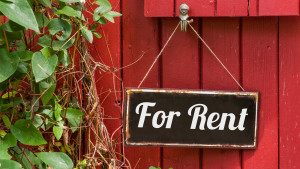Yesterday we posted about 5 Rental Property Warning Signs That Will Save You Money when Purchasing Investment Property In Nevada & Placer Counties CA. Today we are doing a complete 180 turn and giving you the 4 Signs a Property Is Worth Buying and Renting Out. Realtor.com leaves us with some simple yet valuable tips on what to look for when considering purchasing a real estate investment property in Nevada and Placer Counties CA. All 4 pieces of advice are right on with what we would also suggest here at Barrett Property Management. Enjoy the rest of your week friends!
4 Signs a Property Is Worth Buying and Renting Out

Do you have fantasies of becoming a landlord? That is, do you dream that one day, you’ll purchase a promising piece of property, move in some reliable tenants, then kick back and collect rent well into retirement?
If you’ve got the cash and ambition to follow through, there are plenty of condos, homes, and buildings you could buy and rent out—but pinpointing the right one is tough. Don’t give up the dream! Insiders insist there are a few ways to separate the cash cows from the turkeys. Here are some signs a rental property is primed to gush big bucks.
It makes money for you immediately
While many mistakenly size up an investment property by the amount of money it could eventually make them later—once they’ve made a ton of renovations—that’s exactly the wrong approach. As the saying goes in real estate, you should “Make your profit when you buy.” That means: Your income (in the form of rent checks) should cover your costs upfront.
Financial planner and real estate investor Jim Ludwick at MainStreet Financial Planning recommends looking for properties that will generate enough rent in 10 months to cover all costs, including mortgage payments, taxes, and insurance. Another popular rule of thumb is the “2% rule,” which holds that your monthly rent should be at least 2% of the total purchase price of a property. Look at comparable rental listings online to get a sense of what you could reasonably charge for rent. Then, try punching in your numbers, from your rent to mortgage to maintenance costs, into an online investment calculator like this one from CalcXML, to see if you end up in the black.
A dwindling DOM
DOM stands for days on market—how long a property has been for sale. And if the DOM is plummeting across the board in a neighborhood, that’s a key harbinger that this particular housing market is heating up. And since this typically precedes price hikes, that means you can still score a deal on a property that could make you beaucoup bucks in rent (and if you resell down the road).
Another set of listings to check? Rentals in the area. If landlords are offering concessions to tenants, such as a free month of rent or a lower security deposit, those are signs that they’re having a hard time filling apartments, so you may want to steer clear.
Gourmet groceries nearby
Scouts for Whole Foods, Starbucks, and other high-end chains get paid a lot of money to research the up-and-coming neighborhoods with residents (aka your future tenants) who have the disposable income to support their stores. So, if you can buy heirloom tomatoes and a pour-over coffee in a five-block stretch, things are looking good. The presence of Trader Joe’s, Whole Foods, and Starbucks, in particular, bode well for real estate desirability.
“You can’t just look at the numbers,” ways Justin Cohen, chief marketing officer of Pangea Properties, a Chicago-based real estate investment and management company. “You’ve got to really look at the neighborhood and understand what’s happening there.” Get a sense of what type of tenant the neighborhood and property would attract. A property in a college town, for example, might have a high turnover, while one near a desirable elementary school (get stats atGreatSchools.org) might tend to draw families that want to put down roots for years.
And since many millennials favor “walkable” neighborhoods, areas near public transportation are bound to be a good bet. And we’re not just talking about buses and subways in urban jungles; transportation matters in the suburbs and small towns too, although in a different way: Look for towns near (but not right next to) major turnpikes or highways.
A squeaky-clean tenant
If you’re inheriting tenants with the property you’re considering, don’t just trust that current landlord’s word that they “always pay on time.” Run a background check and a credit check (it’s worth paying for a service such as TransUnion SmartMove to do one for you) on any current or potential tenants to see if there are credit issues or a history of evictions, and ask to see pay stubs or a 1099 to show the tenant has the enough income to cover the cost of living there.
And if the tenant has a less than stellar payment history? There actually is a way to turn this into an opportunity to negotiate a lower price for the property, factoring in the cost (and hassle) of a potential eviction. “Whether you keep the tenant or not, by buying someone else’s problem, you’ve gained some equity,” says Jorge Newbery, a real estate investor and the founder and CEO of American Homeowner Preservation.
Source: realtor.com
– See more at: http://www.american-apartment-owners-association.org/property-management/real-estate-investing/4-signs-property-worth-buying-renting/#sthash.HRJqqdfs.dpuf
